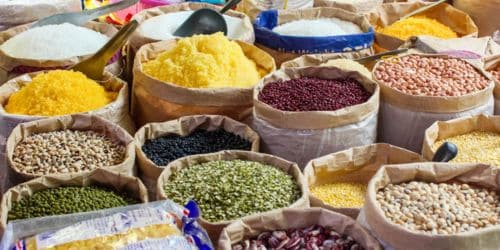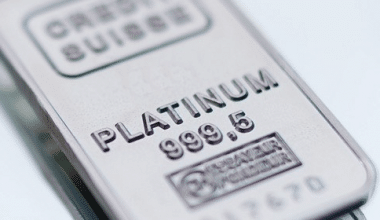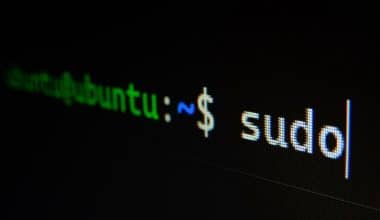Commodity trading, and hence the commodity market, may be traced back to the dawn of human civilization. They are merely another type of asset, like stocks or bonds. The distinction is in the origins, which are more visible. Both have intricate, evolving derivatives that serve as hedging tools for hedgers and as quick money for speculators.
What Is a Commodity Market?
A commodity market is a place where you can purchase, sell, and trade raw materials or main products.
Commodities are frequently divided into two major categories: hard commodities and soft commodities. Natural resources that must be mined or exploited, such as gold, rubber, and oil, are considered hard commodities, whereas agricultural products or livestock, such as corn, wheat, coffee, sugar, soybeans, and pork, are considered soft commodities.
How Commodity Markets Work
Commodity markets provide producers and consumers with access to commodity products in a controlled and liquid marketplace. Market participants can also use commodity derivatives to hedge future demand or output. Speculators, investors, and arbitrageurs are also active participants in these markets.
Certain commodities, such as precious metals, have been regarded as effective inflation hedges, and diversifying a portfolio with a diverse range of commodities as an alternative asset class can help. Because commodity prices tend to fluctuate in opposition to stock prices, some investors rely on commodities during moments of market instability.
Commodities trading used to take a large amount of time, money, and knowledge, and it was primarily limited to professional traders. Today, there are more ways to participate in commodity markets.
History Of The Commodity Market
Commodity trading dates back to the birth of human civilization when tribal tribes and newly founded kingdoms would barter and trade for food, supplies, and other products. Commodity trade precedes stock and bond trading by centuries. The growth of empires such as ancient Greece and Rome can be directly linked to their abilities to create intricate commercial systems and promote commodity exchange across enormous areas via routes such as the famed Silk Road, which connected Europe to the Far East.
Commodities are still traded all over the world—and on a vast scale. With the introduction of exchanges and derivatives markets, trading has also gotten more complicated. Commodity exchanges govern and standardize commodity trading, enabling liquid and efficient marketplaces.
The Chicago Board of Trade (CBOT), founded in 1848, is perhaps the most prominent modern commodities market. Initially, the CBOT traded solely agricultural commodities such as wheat, corn, and soybeans to assist farmers and commodity customers in risk management by reducing price uncertainty for certain agricultural products.
It now provides options and futures contracts on a wide range of items, including gold, silver, US Treasury bonds, and energy. In 2007, the Chicago Mercantile Exchange (CME) Group combined with the Chicago Board of Trade (CBOT), adding interest rates and stock index goods to the group’s previous agricultural product offerings.
Some commodity exchanges have merged or closed their doors. In the mid-2000s, the Chicago Mercantile Exchange (CME) purchased three other commodity exchanges in the United States.
Types Of Commodity Markets
Commodity trading can be divided into two broad groups based on the commodity type. These are the two categories:
#1. Hard Commodities
Hard commodities are those that are required by the manufacturing industry. These should be dug and extracted manually from the land or the sea. They have limited reserves and are particularly vulnerable to geopolitical and economic events. Gold, oil, silver, rubber, copper, and other commodities are examples of such commodities. The extraction process accounts for the majority of the pricing.
#2. Soft commodities
Soft commodities are primarily agricultural or livestock goods. In contrast to hard commodities, they are produced rather than mined or extracted. They have practically endless reserves and are more susceptible to weather or natural occurrences than to geopolitical circumstances. Corn, wheat, barley, sugar, pig, coffee, tea, and other such commodities are examples.
Features Of The Commodity Market
The commodities market, like currency markets, has a number of distinguishing characteristics. Let’s take a closer look at them to gain a better understanding of the market.
#1. A diverse range of commodities are traded.
The commodities market is an attractive place to trade a wide range of goods. You are now aware of the fundamental distinction between hard and soft goods. When you look closely, you’ll notice a wide range of products. Here’s a sneak peek.
- Coffee
- Cattle
- Wheat
- Rice
- Milk
- Sugar
- Gasoline
- Cocoa
- Cotton
- Crude oil
- Aluminum
- Copper
- Gold
- Nickel
#2. Price discovery is frequently utilized.
Similarly to how the stock market provides a lot of insight into the price of stocks and, to a lesser extent, the firm behind them, the commodities market continuously provides information about the existing prices of commodities. It becomes easier to make business decisions by examining these price changes and speculating on anticipated future trends, especially for manufacturing companies that employ these commodities as raw materials. Wholesale traders can also use this data to determine the prices of their products for retail sales.
#3. Used to hedge risk
During times of crisis, such as wars or recessions, traditional financial assets such as stocks and bonds sometimes collapse, potentially resulting in losses for traders. However, in times like these, commodities might help to mitigate investment risk. In reality, commodity trading is a common approach for mitigating the inflation that occurs during crises.
#4. A wide range of contracts are traded.
Cash contracts are used in the commodities market to buy and sell commodities at full price. It also includes futures and options contracts, which, as you may recall from previous chapters, can be bought and sold for a fraction of the initial price. With so many contracts to pick from, there are numerous trading tactics available in the commodities market.
#5. A thriving derivatives market
The commodities market’s derivatives segment, which includes futures and options, is extremely active. Every day, a large volume of deals occur in the commodities market in this section, indicating that it is very liquid. Traders frequently strive to capitalize on this factor in order to make quick gains.
Advantages Of A Commodity Market
#1. Mechanism of Hedging
The primary benefit of investing in the commodities market is that it provides a way for producers, importers, and exporters to hedge price volatility. A farmer, for example, can insulate himself from wheat price changes by selling a futures contract with a three-month expiry date. A store, on the other hand, can safeguard its position by purchasing a futures contract.
#2. Fewer Manipulations
Commodity market stocks, as opposed to financial market stocks, deal in actual tangible things that are raw ingredients for manufacturing businesses. As a result, commodity markets are driven by supply and demand and are less susceptible to manipulation than financial markets.
Disadvantages
Commodities investments are risky since geopolitical events influence pricing. For example, any hint of a political crisis in the Middle East causes crude oil prices to skyrocket. Commodity markets are prone to operational breakdowns as a result of such systematic risk and must be continually checked to avoid undesirable scenarios.
Commodity markets, unlike financial markets, thrive on low margins and heavy leverage. High leverage ratios, while beneficial in terms of prospective profit, might result in significant losses during an economic downturn or unanticipated volatile movements.
How Trade In A Commodity Market
In order to trade in this market, the trader must first complete a few tasks.
- It is vital to learn about the market ahead of time, comprehend its price dynamics, demand and supply, price impacting factors, and trading instruments.
- The trader should be able to choose the suitable broker from a firm that charges affordable fees, offers appropriate trading tools, customer service, and has a strong track record.
- The trader must next open a trading account, complete the necessary paperwork, and deposit the requisite funds.
- It is critical to create a proper trading plan based on risk tolerance, chosen commodities, trading objectives, and risk management approaches.
- The trader should next examine market trends, historical data, economic conditions, commodities market price patterns, and choose the appropriate trading instruments such as futures contracts, ETFs, options, and so on.
- They should then place a purchase or sell order. It is critical to monitor order execution and implement risk management measures to limit losses and diversify the portfolio.
Finally, it is always vital to monitor and alter trades based on changes in the risk profile, market dynamics, and learning from experiences in order to optimize the process.
Commodity Market Forms
Commodities are generally traded in either spot markets or derivatives markets. Spot markets, sometimes known as “physical markets” or “cash markets,” are places where buyers and sellers trade real items for immediate delivery.
Forwards, futures, and options are all part of the derivatives market. Forwards and futures are derivatives contracts in which the underlying asset is the spot market. These are contracts that grant the owner control of the underlying asset at some point in the future in exchange for a predetermined price today. Physical delivery of the commodity or other asset would take occur only when the contracts expired, and traders frequently roll over or close out their contracts to avoid making or taking delivery entirely.
The over-the-counter (OTC) market refers to commodity trading that occurs outside of the operation of exchanges.
Forwards and futures are similar in many ways, with the exception that forwards can be customized and traded over-the-counter, whereas futures are standardized and exchanged on exchanges.
Commodity Trading vs. Stock Trading
Access to commodities markets, whether spot or derivatives, is prohibitively expensive for the vast majority of private investors. Direct access to these markets often necessitates the use of a specialized brokerage account and/or specific permits. Because commodities are seen as an alternative asset class, pooled funds that trade commodities futures, such as CTAs, normally accept only accredited investors. Nonetheless, ordinary investors might acquire indirect access to commodities through the stock market. Stocks in mining or materials industries are often associated with commodity prices, and there are currently a variety of ETFs that track specific commodities or commodities indexes.
These ETFs can help investors diversify their portfolios, but for most long-term investors, stocks and bonds will be the foundation of their holdings. Furthermore, because commodity prices are more volatile than those of equities and bonds, commodity trading is frequently best suited for those with a larger risk tolerance and/or a longer time horizon.
What Do Commodity Traders Do?
Commodity traders purchase and sell physical (spot) commodities as well as derivatives contracts that use a physical commodity as the basis. Depending on your trading style, you will use this market for a variety of goals, such as purchasing or selling a real product, hedging, speculating, or arbitraging.
Are Commodities a Good Investment?
Commodities, like any other investment, can be profitable but also risky. To invest in commodities, an investor must first understand the markets for the commodity in question. Oil prices, for example, might fluctuate depending on the political atmosphere in the Middle East, so a trader should be up to date on current developments in that region.
The sort of investment is also important. ETFs offer greater diversification and reduced risks, but futures are more speculative and carry higher risks due to margin requirements.
Having said that, commodities, particularly gold, can be used as a hedge against inflation and a market slump.
How Do Commodities Markets Work?
Buyers and sellers in spot marketplaces exchange cash for quick delivery of the actual product. Buyers and sellers in derivatives markets trade cash for the right to future delivery of a product.
Derivatives investors frequently roll over or close down their positions before delivery may occur. Forwards are tailored between counterparties and traded over the counter. Futures and options are traded on exchanges and have standardized, heavily regulated contracts.
In Conclusion
Commodity trading can be used to diversify holdings, and hedge against inflation, and profit, but traders must have a high risk tolerance if they choose this route. Before you add this asset type to your portfolio, like with other high-risk, high-reward trading options, be sure you grasp and comprehend the strategies underlying trading commodities and their derivatives.
- MARKET RISKS: Best Practices and Easy Guide with Examples
- INFLATION INVESTMENTS: Definition, Types & Best Practices(
- What are Commodities: Definition, Examples, List & Stocks
- PRICING OF FUTURES: How to Price Future Contracts






